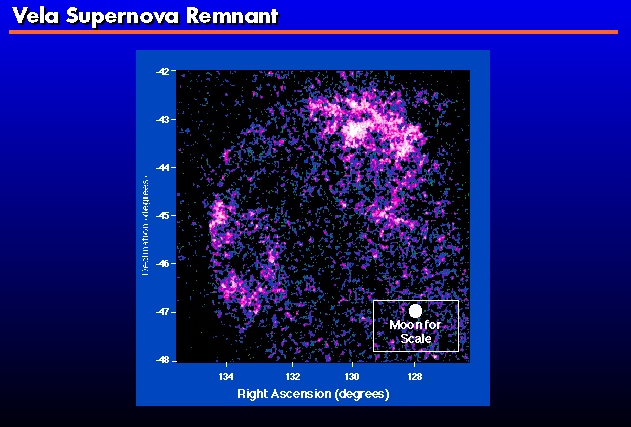 |
Supernovae
are among the most spectacular and violent events in the stellar universe,
however, they are relatively rare. Supernovae are exploding massive stars
at the end stage of their evolution. The explosion of a single supernova
can release enough energy to outshine the entire galaxy where the explosion
is occuring. The EUVE satellite has detected the remnant glow of supernovae
that exploded tens of thousands of years ago in our own Milky Way. One
such detection is of the Vela Supernova Remnant, known to astronomers through
observations in the visible and other wavelength ranges besides the EUV.
This image shows the Vela Supernova Remnant as seen by the EUVE imaging
telescopes in 1992. The image shows 100 Angstrom extreme ultraviolet radiation
from the remnant, which is 1600 light years away, emitted by hot gas at
temperatures of 1 - 3 million degrees Kelvin. The gas at these high temperatures
is produced by the shock wave from the supernova explosion 13,000 years
ago plowing into the diffuse interstellar medium between stars. A circle
with the size of the full Moon is shown for scale. If this celestial feature
were bright enough to be detected by our eyes (in either visible or EUV
radiation) we would be able to enjoy a display several times the size of
the full Moon. |
 |



